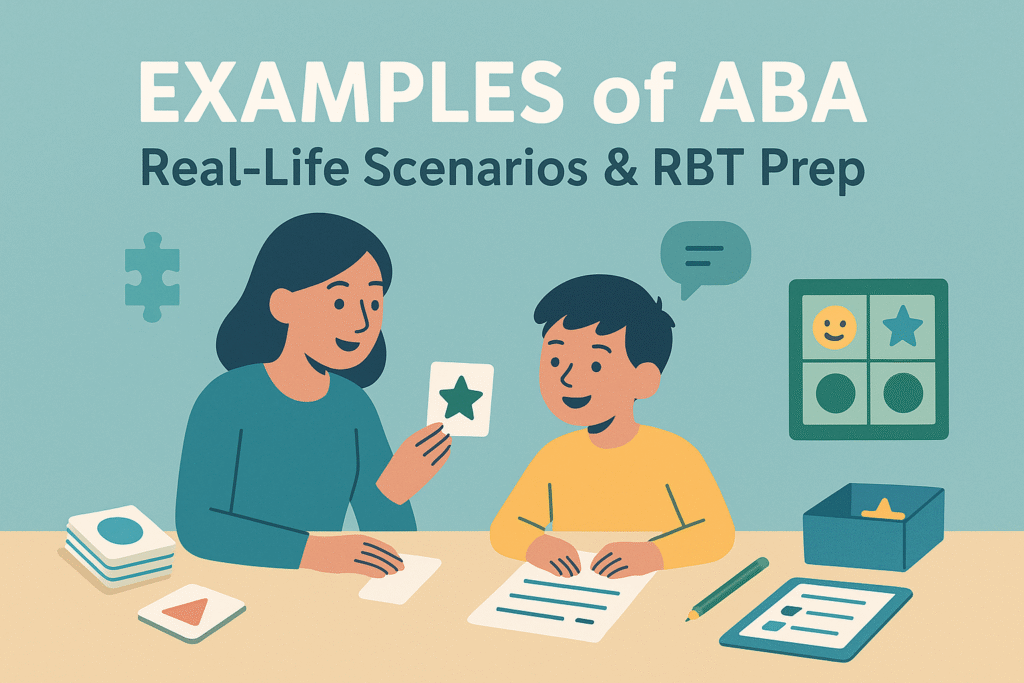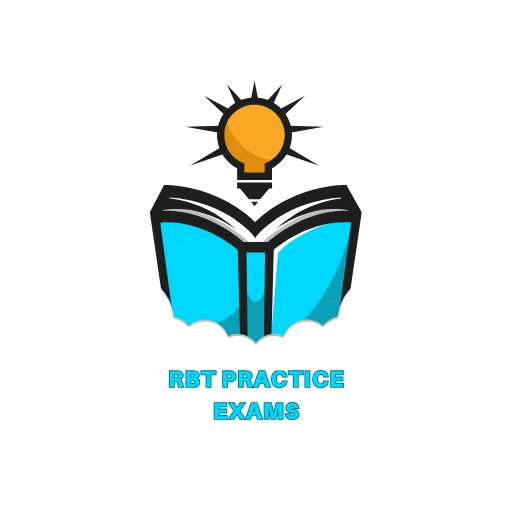Applied Behavior Analysis (ABA) is one of the most widely used approaches for teaching skills and supporting positive behavior change. Whether you are a parent, teacher, or preparing to become a Registered Behavior Technician (RBT), real-life examples of ABA help bring the concepts to life. Instead of staying abstract, examples show how reinforcement, prompting, and structured teaching make a difference in everyday situations.
Table of Contents

What is Applied Behavior Analysis (ABA)?
Applied Behavior Analysis is the science of learning and behavior. It focuses on how people acquire skills and how behavior is shaped by the environment. According to the BACB and Wikipedia’s ABA definition , it is widely used in autism therapy, classrooms, healthcare, and even corporate training. At its core, ABA uses evidence-based strategies to improve social, communication, and learning skills.
Why Real-Life Examples of ABA Matter?
Reading about the theory of ABA is one thing, but seeing it applied in real-life scenarios makes the concepts more practical. For families, it helps them apply techniques at home. For teachers, it shows how classroom management can improve. For RBT students, studying examples of ABA connects directly to test prep and fieldwork, making concepts easier to understand.
Common Examples of ABA in Daily Life Positive Reinforcement
Positive reinforcement is one of the most common ABA strategies. It works by rewarding a behavior so that it is more likely to happen again. Example: A child finishes homework and gets extra playtime. Over time, homework completion increases because the child connects it with a reward.
Discrete Trial Training (DTT)
DTT breaks down skills into small, manageable steps. Each step is taught one at a time with clear instructions and reinforcement. Example: Teaching a child to identify colors by showing flashcards and giving praise or a token when they respond correctly.
Functional Communication Training (FCT)
FCT focuses on replacing challenging behaviors with appropriate communication. Example: Instead of screaming when frustrated, a child is taught to ask for help using words, a picture card, or a speech device.
Shaping Behavior
Shaping means rewarding small steps toward a final goal. Example: Teaching a child to say “water.” At first, the attempt “wa” is praised. Later, only “water” receives reinforcement. Gradually, speech clarity improves.
Task Analysis & Chaining
ABA often breaks complex tasks into smaller steps through task analysis. Chaining then links these steps together until the person can complete the full task. Example: Brushing teeth broken down into picking up the toothbrush, applying toothpaste, brushing, rinsing, and putting the toothbrush away.
ABA Therapy Examples with Children
ABA therapy is especially well-known for supporting children with autism. Here are some examples of ABA in action with kids:
Using token boards to motivate participation in classroom activities.
Teaching play skills by reinforcing turn-taking.
Using picture schedules to help with transitions.
Reducing tantrums by reinforcing calm communication instead.
These structured approaches help children gain independence, improve social skills, and build confidence.
ABA in Classroom Settings
Teachers often use ABA principles without realizing it. Examples include:
Giving praise or stickers when students complete assignments.
Breaking down multi-step math problems into smaller tasks.
Using visual supports to guide classroom routines.
Reinforcing on-task behavior with privileges like choosing a class activity.
ABA strategies make classroom management smoother and help students of all learning levels succeed.
ABA Examples for Everyday Adults
ABA isn’t just for children it also applies to daily life for adults. Examples include:
Using fitness apps that give badges for completed workouts (positive reinforcement).
Breaking a large project at work into smaller steps (task analysis).
Setting reminders and gradually building new habits like drinking more water (shaping).
Whether in health, career, or personal growth, ABA techniques help with consistent behavior change.
How ABA Examples Connect to RBT Exam Prep?
For anyone preparing to become an RBT, knowing examples of ABA is essential. The RBT exam doesn’t just test theory; it also evaluates how well you can apply concepts in practice. Reviewing examples strengthens your ability to connect terms with real-life scenarios.
Boost your prep with tools like:
rbt practice test
rbt mock test
These resources are built to reinforce your knowledge and give you confidence before test day.
FAQs About ABA Examples What are some simple ABA examples for parents?
Parents can use ABA by rewarding positive behavior, such as giving praise when a child shares toys, or setting up visual schedules to make routines predictable.
How is ABA used in schools?
In schools, ABA often looks like structured reinforcement, classroom token systems, and breaking tasks into smaller steps so all learners can succeed.
Can ABA techniques help adults too?
Yes. From workplace productivity to healthy lifestyle habits, ABA strategies like reinforcement, shaping, and chaining are effective for adults as well.
Conclusion
Applied Behavior Analysis may sound technical, but real-world examples of ABA make it easy to understand and apply. Whether you are a parent, teacher, or RBT student, examples show how powerful reinforcement and structured learning can be.
If you’re preparing for certification, strengthen your knowledge with a rbt practice exam today. The more examples you review, the more confident you’ll feel when applying ABA in real-life situations.
